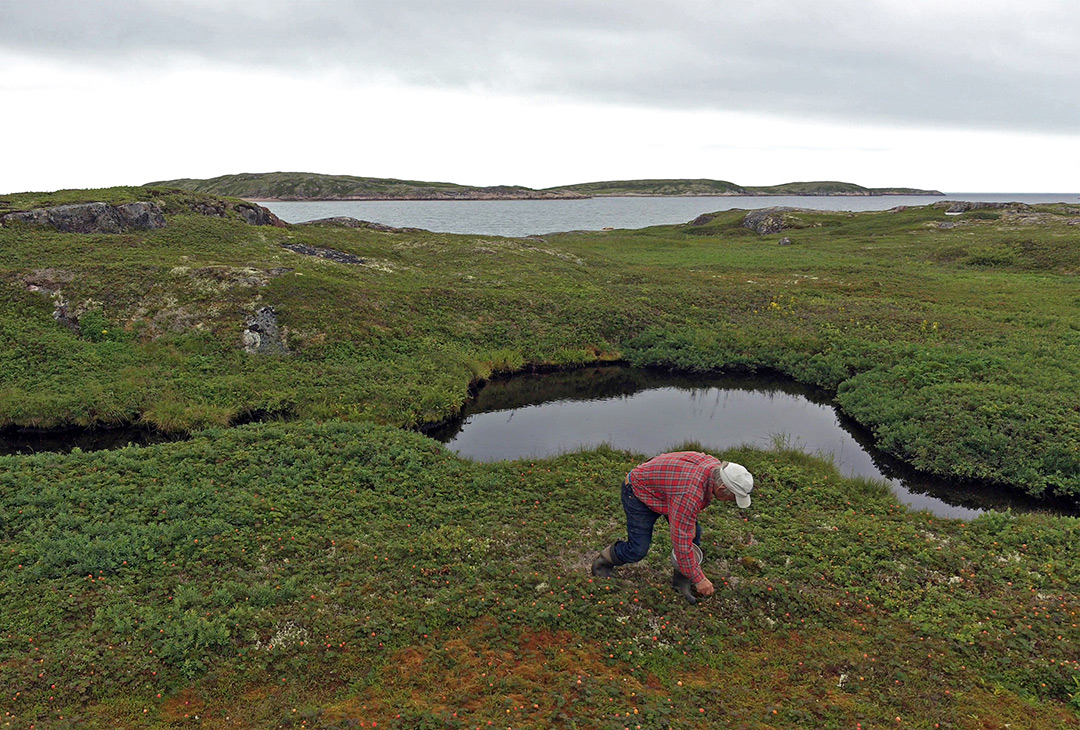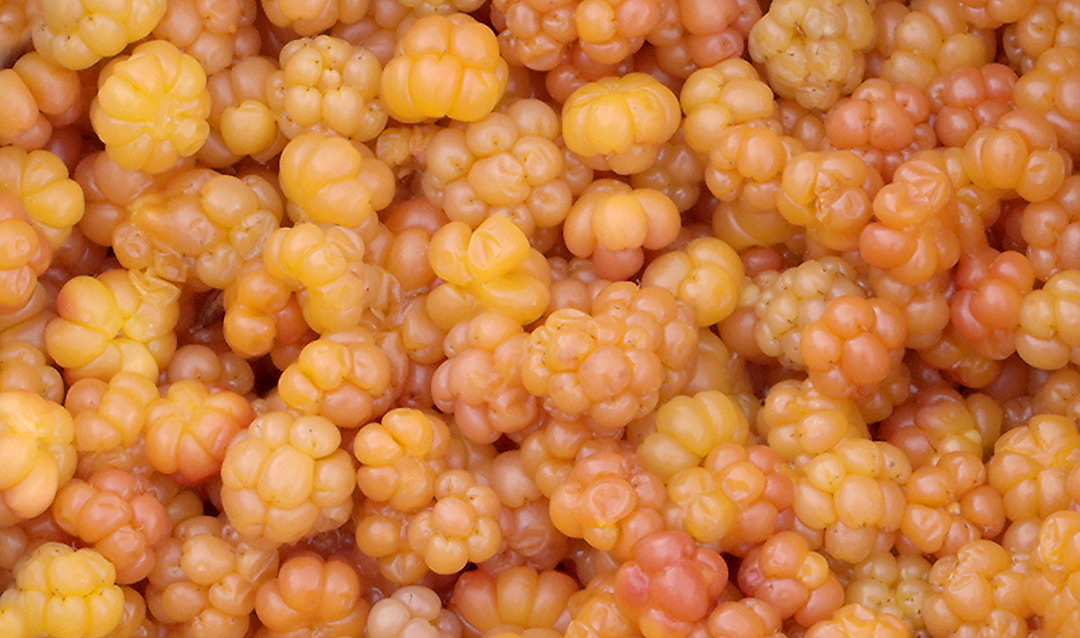
The fruit of the region, par excellence, is a yellow berry, Rubus chamaemorus, called the chicoté [also spelled chicouté or chicoutai] by the Indigenous people and the French; and bake-apple by the English. This fruit is valued not only by people, but also by dogs and bears, which are very fond of it; it is made into sauces, but it is used above all for jams, which homemakers prepare for the winter.
Several plant species with edible berries are found in the vicinity of St. Paul's River and elsewhere on the Lower North Shore. Among them: the blackberry (crowberry), blueberry, raspberry, red berry (lingonberry), and strawberry. But the cloudberry, or bakeapple, has reigned supreme. It grows low to the ground in damp areas, ripens from pale red to amber in early August, and is rich in vitamin C. With a distinctive tart taste, it has long been used to make pies as well as preserves.

In the nineteenth century, women and children were usually responsible for gathering bakeapples because men and older boys were preoccupied with fishing during the berry picking season. In some instances, the berries that children gathered were sold to support missionary work on and off the Lower North Shore. In 1865, young congregants on Caribou Island expressed their desire to “help send the Bible to those who have never heard of Jesus.” A missionary-teacher named Margaret Macfarlane told them that if they would gather bakeapples, she would “nicely preserve them and send them to Montreal to be sold for them…. I cannot tell you the joy this assurance gave them…. One little boy … exclaimed, ‘O mamma, I'm going to pick twelve buckets full.'”
The following year, Macfarlane noted that the children had done “nobly again this year. For the berries they have gathered we have already realized nearly thirty dollars; and, from what still remains, will, I think, realize fifteen or twenty more.”
In the twentieth century, St. Paul's River merchants, such as Hollis Fequet, bought bakeapples from local pickers. So did the Hudson's Bay Company. Today, some residents of St. Paul's River still sell berries to buyers in the region. But many pick berries simply because they enjoy getting outdoors and sharing the fruit of their labours with family and friends.
